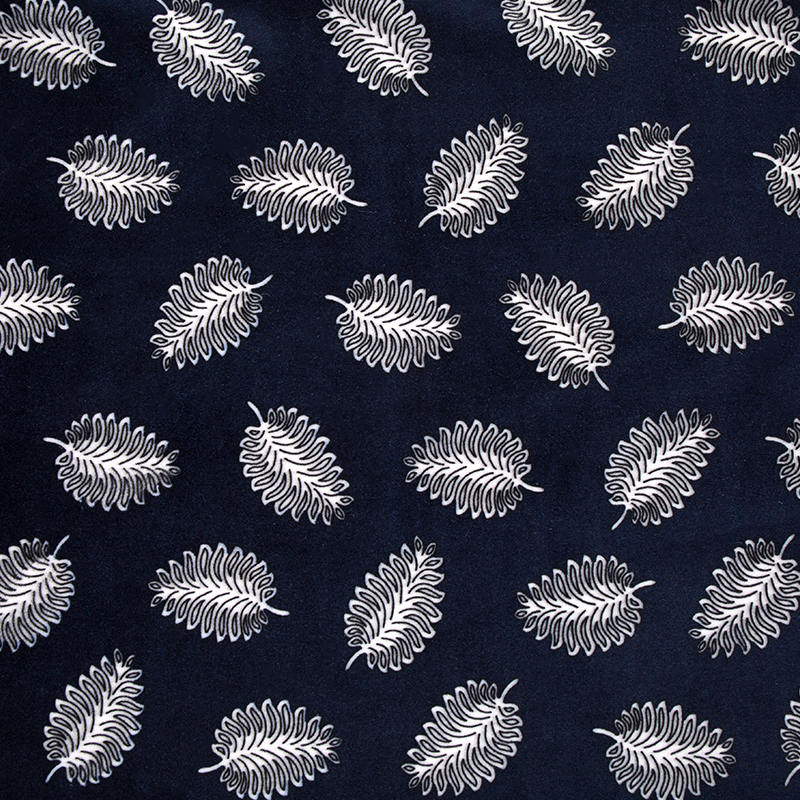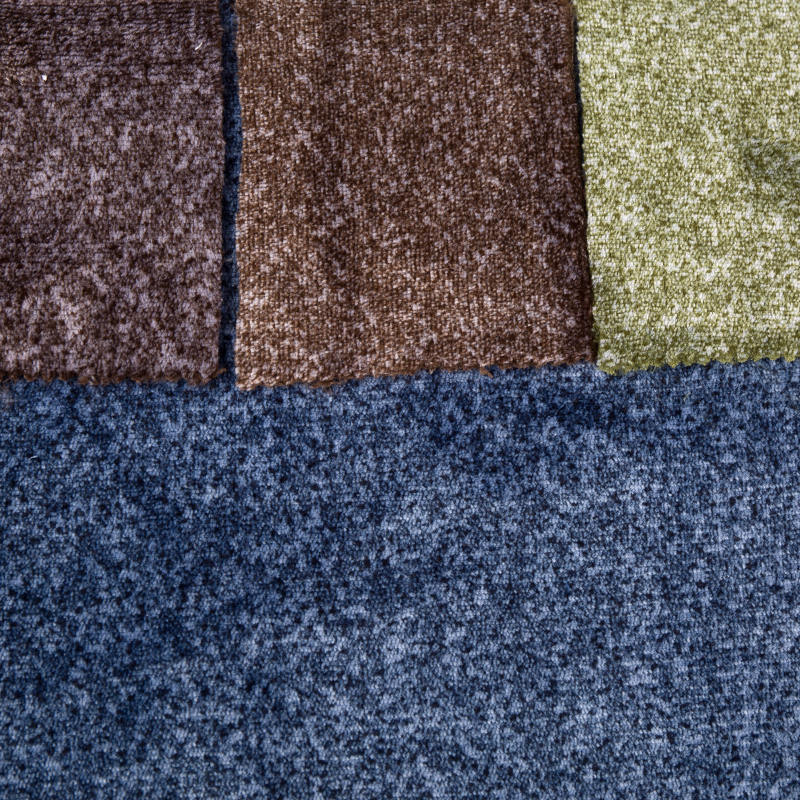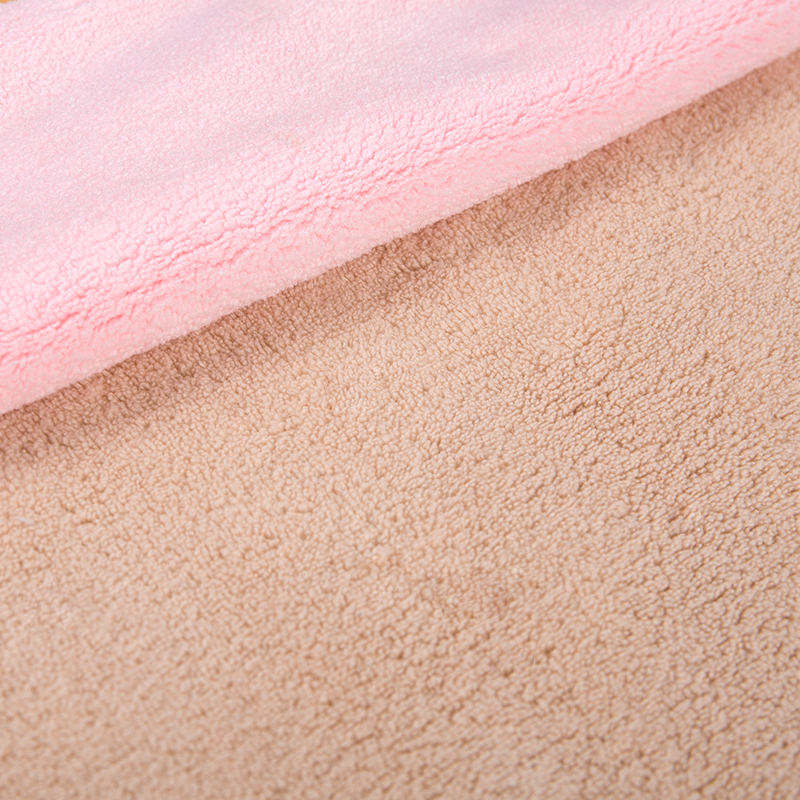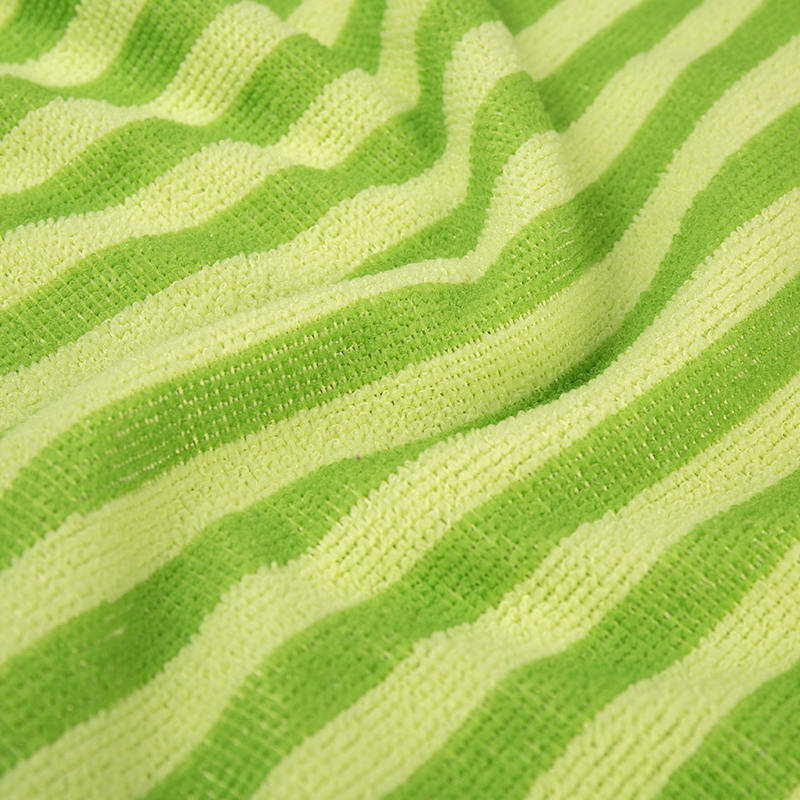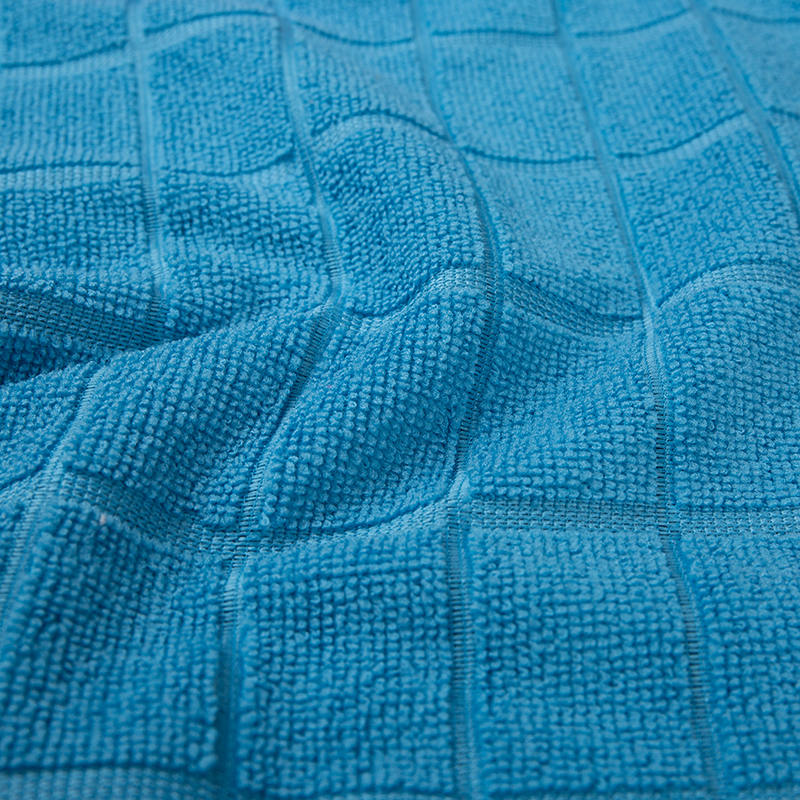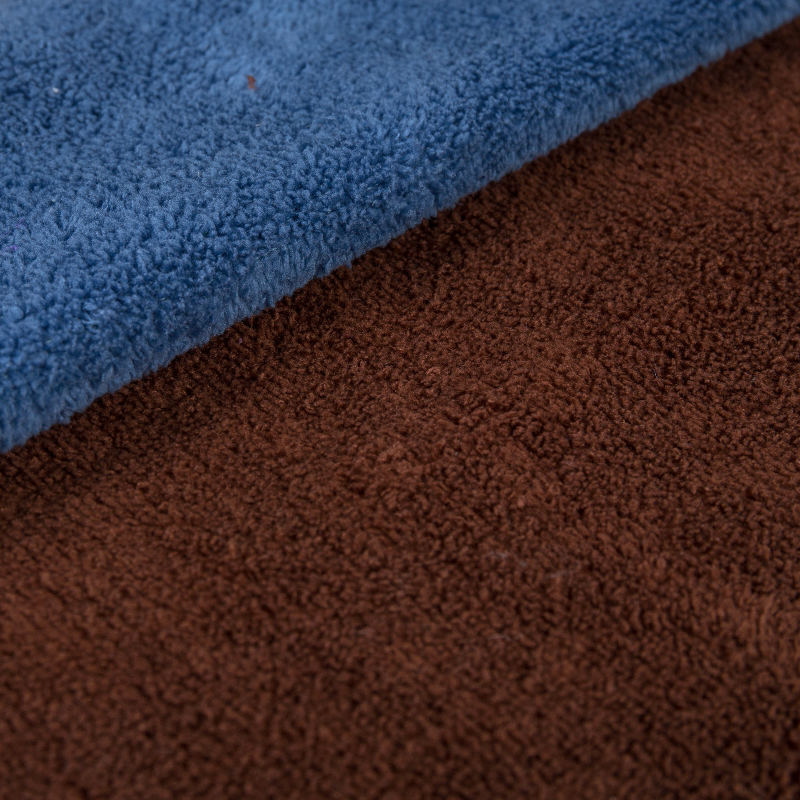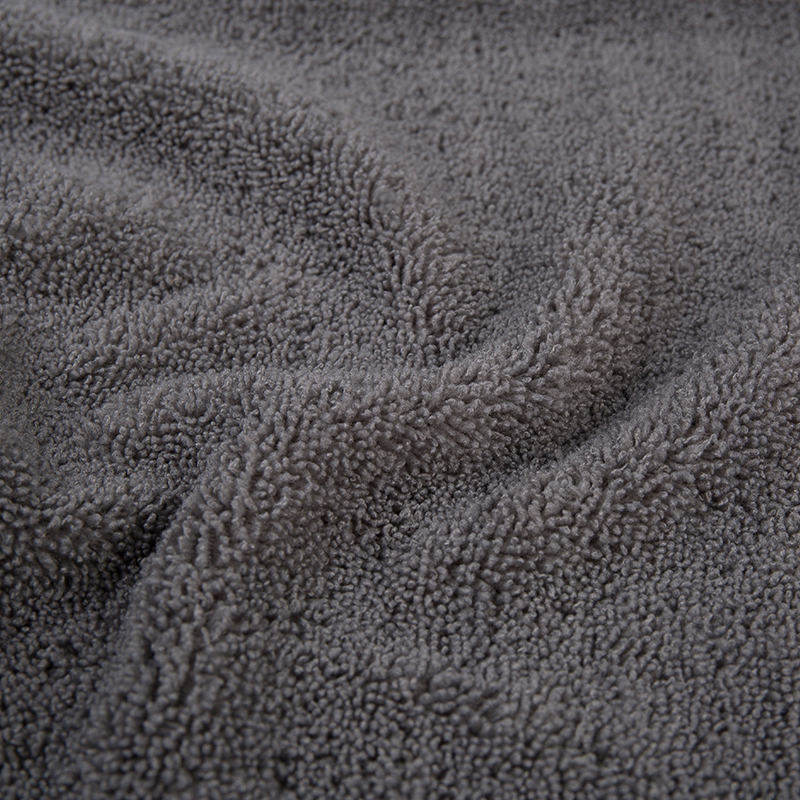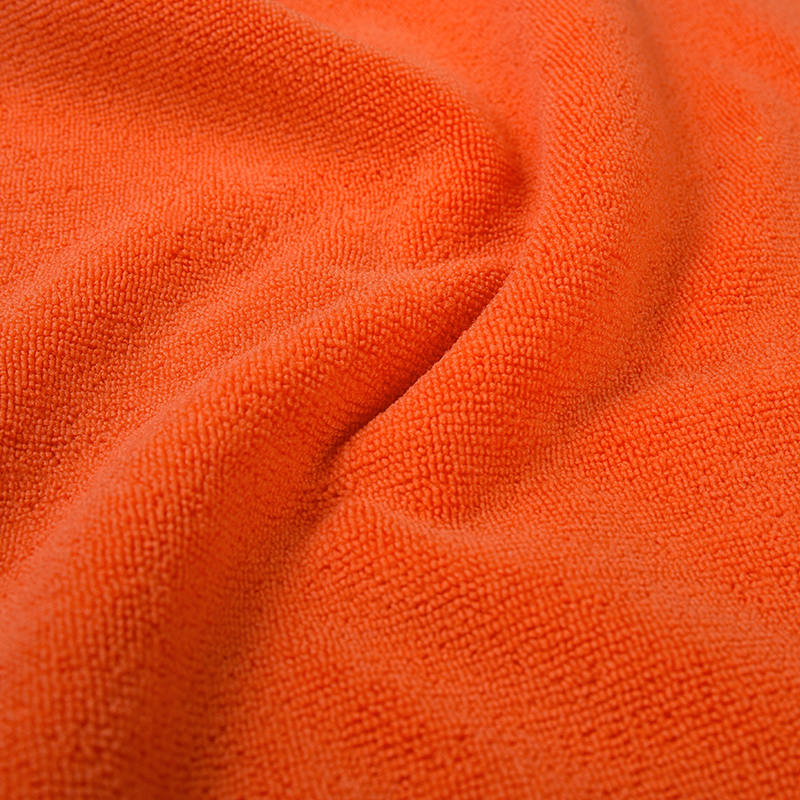The water absorption performance of single-sided plain polyester-cotton terry cloth is closely related to the height of the terry loop, which is the key fulcrum for balancing the water absorption space and the feel of use. As a structural unit that directly contacts water, the height of the terry loop determines the physical space that the fabric can accommodate water. If the height of the terry loop is too low, although the surface of the fabric is flat, it is difficult to form enough water storage space, resulting in limited single-time water absorption; while too high a terry loop can increase the water storage capacity, it may make the fabric thick and stiff, affecting the soft touch and flexibility of use. During the weaving process, the height of the terry loop needs to be accurately set according to the specific use of the terry cloth: when used for bath towels, a moderately high terry loop can enhance the water absorption efficiency and quickly dry the body; when making kitchen wipes, a moderate terry loop height can ensure efficient water absorption and facilitate flexible wiping of corners.
The code for regulating water penetration and distribution
The density of the terry loop plays a decisive role in the water absorption efficiency of single-sided plain polyester-cotton terry cloth, and is the core code for regulating water penetration and distribution. When the density of the terry is too low, the terry on the surface of the fabric is sparse, and it is difficult for water to diffuse and penetrate quickly, which is easy to form water stains in some parts; while too high a density may cause the terry to squeeze each other, hindering the water from entering the fiber and reducing the water absorption speed. Reasonable terry density needs to be designed according to the weight of the fabric and the characteristics of the yarn to ensure that each terry can not only play a role in water absorption independently, but also form a synergistic effect. In actual weaving, by adjusting the number of needles and the yarn feeding frequency of the loom, the terry is arranged in a uniform and moderately tight state to build an efficient water transmission network. After the water contacts the fabric, it can quickly penetrate into the interior through the gaps between the terry and evenly distribute throughout the fabric, achieving a fast and comprehensive water absorption effect.
Solid guarantee of terry shape and function
Precise adjustment of yarn tension is the key link to maintain the shape of the terry and ensure the water absorption function. During the weaving process, excessive yarn tension will cause the terry to be tight and deformed, destroying its regular cylindrical structure, which will not only affect the appearance of the fabric, but also compress the water storage space inside the terry; too little tension will easily cause the terry to loosen and fall, reducing the effective contact area with water. In order to ensure that the terry loops maintain an upright and full shape during the weaving process, the yarn tension needs to be monitored in real time and adjusted dynamically. The intelligent tension control system equipped on modern looms can automatically adjust the tension according to the thickness, twist and weaving speed of the yarn. Through stable and moderate tension, each terry loop can be fixed on the surface of the fabric in the best posture. Even after high-speed weaving or long-term use, it can still maintain a good three-dimensional structure and continue to play an efficient water absorption role.
System optimization mechanism of water absorption performance
The super water absorption performance of single-sided plain polyester-cotton terry cloth is not the result of a single parameter, but the result of the coordinated regulation of terry loop height, density and yarn tension. The height of the terry loop lays the foundation for the water absorption space, the density of the terry loop optimizes the water transfer efficiency, and the yarn tension ensures the stability of the terry loop structure. The three are interrelated and affect each other. When increasing the height of the terry loop, the density needs to be adjusted simultaneously to avoid the terry loop from falling over, and the adjustment of the yarn tension needs to take into account the adaptability of the height and density of the terry loop. In actual production, textile engineers have established a parameter collaborative optimization model through repeated experiments and data accumulation, and customized weaving solutions for different application scenarios. From daily household cleaning to industrial precision wiping, single-sided solid-color polyester-cotton terry cloth has maximized its water absorption performance with this precise weaving process system.

 English
English Español
Español 中文简体
中文简体